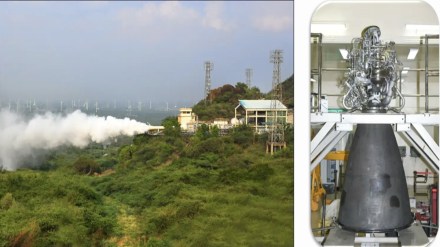ISRO has achieved a significant milestone in the process of ensuring the safety and reliability of its CE20 cryogenic engine, which is a crucial component powering the cryogenic stage of the LVM3 launch vehicle. The LVM3 launch vehicle is specifically designated for carrying out human-rated missions, particularly those associated with ISRO’s Gaganyaan program, which aims to send Indian astronauts into space.
Ground qualification tests for CE20 engine
The final round of ground qualification tests was completed on February 13, 2024, marking a major milestone in the human rating process of this cryogenic engine, announced ISRO on February 21. These ground qualification tests are essential to verify and validate the performance of the engine under simulated flight conditions, ensuring that it meets stringent safety and reliability standards required for crewed missions.
The final test which was the seventh in a series of vacuum ignition tests, was conducted at the High Altitude Test Facility located at ISRO Propulsion Complex, Mahendragiri.
Vacuum ignition tests are crucial as they replicate the conditions the engine will experience during actual flight, particularly in the vacuum of space.
To meet human rating standards, four CE20 engines underwent a total of 39 hot firing tests, conducted under various operational scenarios, for a duration of 8810 seconds. This surpasses the minimum human rating qualification standard requirement of 6350 seconds.
Additionally, ISRO has successfully concluded acceptance tests for the flight engine designated for the first unmanned Gaganyaan (G1) mission, tentatively slated for the second quarter of 2024.
This engine will propel the upper stage of the human-rated LVM3 vehicle, boasting a thrust capacity ranging from 19 to 22 tonnes and a specific impulse of 442.5 seconds.
